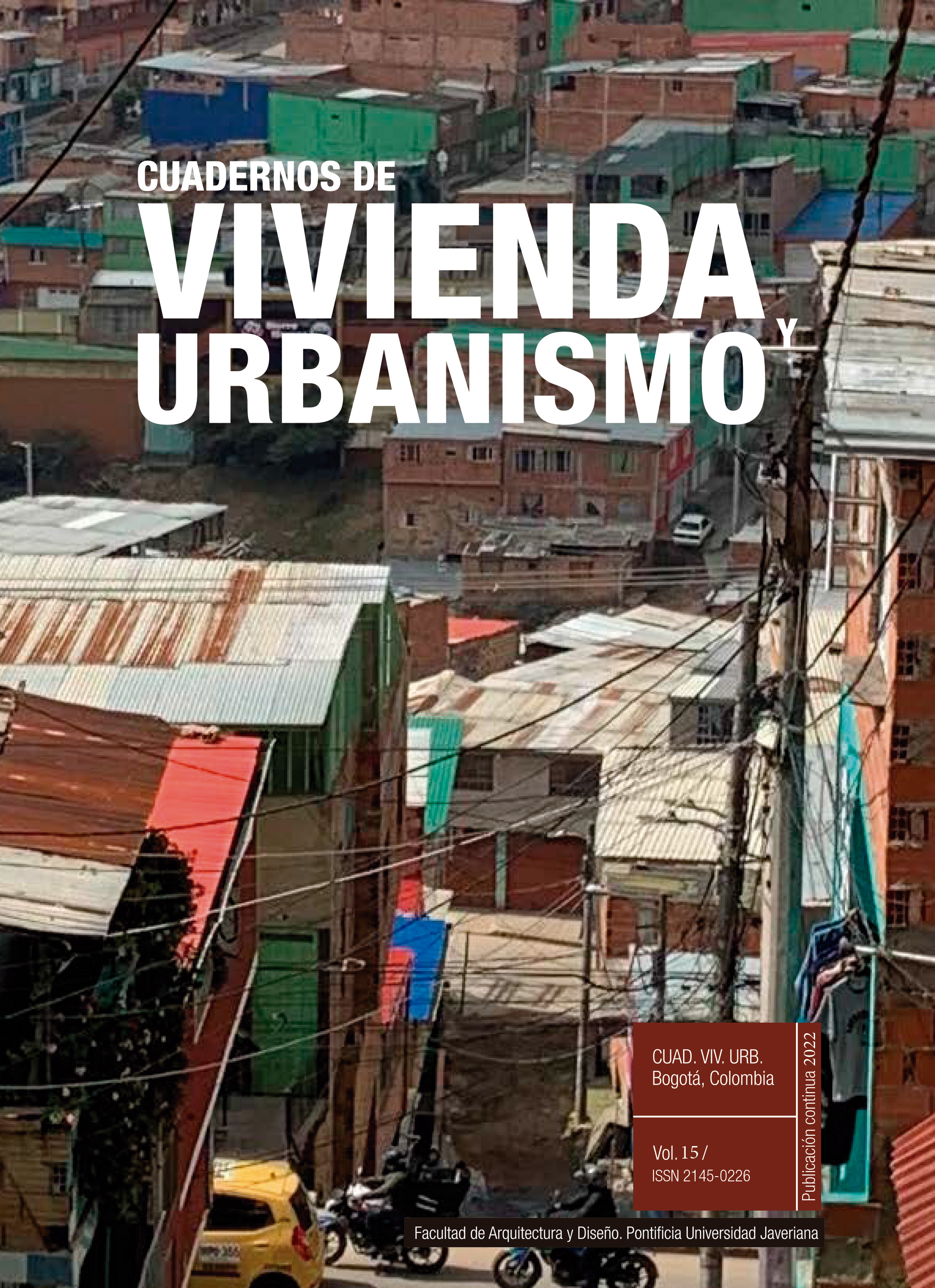Resumen
Se plantea como objetivo de esta investigación la evaluación de las áreas metropolitanas de Santiago, Valparaíso y Concepción, con el fin de caracterizar las composiciones sociodemográficas de los sectores con mayor posibilidad de avance hacia la implementación de la ciudad de 15 minutos. Para ello, se realizó un levantamiento cartográfico de 24 funciones urbanas esenciales a menos de 15 minutos. Luego se construyeron perfiles sociodemográficos de dichas áreas, y como resultado se obtuvo un conjunto de mapas que visibilizan los barrios de cada ciudad donde es más factible implementar ciudades de 15 minutos. Los resultados reflejan la diferencia en la composición sociodemográfica de cada barrio para las áreas metropolitanas estudiadas. El aporte de este estudio es revisar la distancia que puede existir entre las conformaciones urbanas actuales de estas áreas metropolitanas, para proyectar un entorno de ciudad sustentable como el que pregonan las ciudades de 15 minutos
Alexander, C. (1966). A city is not a tree. City, 122(1), 58-62. https://doi.org/10.1017/CBO9781107415324.004
Berry, B. J. L., & Garrison, W. L. (1958). The Functional Bases of the Central Place Hierarchy. Economic Geography, 34(2), 145. https://doi.org/10.2307/142299
Cai, L., y Liu, A. Y. C. (2015). Wage differentials between immigrants and the native-born in Australia. International Journal of Manpower, 36(3), 374-396. https://doi.org/10.1108/IJM-04-2014-0104
Correa-Parra, J., Vergara-Perucich, J. F., & Aguirre-Nuñez, C. (2020). Towards a Walkable City: Principal Component Analysis for Defining Sub-Centralities in the Santiago Metropolitan Area. Land, 9(10), 362. https://doi.org/10.3390/land9100362
De Castro Leiva, G., Dos Reis, D. S., & Filho, R. D. O. (2020). Estrutura urbana e mobilidade populacional: implicações para o distanciamento social e disseminação da Covid-19. Revista Brasileira de Estudos de População, 37, 1-22. https://doi.org/10.20947/S0102-3098a0118
Ewing, R., Handy, S., Brownson, R., Clemente, O., & Winston, E. (2006) Identifying and measuring urban design qualities related to walkability. Journal of Physical Activity and Health, 3, s223-s240.
Gehl, J. (2017). A Mayor’s Guide to Public Life What’s in this guide ? DKOK.
Hidalgo, A. (2020). Le programme d’Anne Hidalgo. https://annehidalgo2020.com/
INE. (2017). Segunda Entrega de Resultados Definitivos CENSO 2017. http://www.censo2017.cl/wp-content/uploads/2018/05/presentacion_de_la_segunda_entrega_de_resultados_censo2017.pdf.
Lloyd Lawhon, L. (2009). The Neighborhood Unit: Physical Design or Physical Determinism? Journal of Planning History, 8(2), 111-132. https://doi.org/10.1177/1538513208327072
Moreno, C. (2020). Droit de cité - De la “ville-monde” à la “ville du quart d’heure”. Editions de l’Observatoires.
Moreno, C., Allam, Z., Chabaud, D., Gall, C., & Pratlong, F. (2021). Introducing the “15-Minute City”: Sustainability, Resilience and Place Identity in Future Post-Pandemic Cities. Smart Cities, 4(1), 93-111. https://doi.org/10.3390/smartcities4010006
Murthy, V. h. (2015). Making our communities walkable for older adults. Public Health Reports, 130(5), 424-425.
Muxi, Z., Casanovas, R., Cicoletto, A., Fonseca, M., & Gutierrez, B. (2011). ¿Qué aporta la perspectiva de género al urbanismo? Feminismos, 17(1), 105-129.
OECD (2013). OECD Publishing. https://doi.org/10.1787/9789264191808-en
Pozoukidou, G., & Chatziyiannaki, Z. (2021). 15-Minute City: Decomposing the New Urban Planning Eutopia. Sustainability, 13(2), 928. https://doi.org/10.3390/su13020928
Pucher, J., & Dijkstra, L. (2003). Promoting Safe Walking and Cycling to Improve Public Health: Lessons From The Netherlands and Germany. American Journal of Public Health, 93(9), 1509-1516. https://doi.org/10.2105/AJPH.93.9.1509
Rebelo, E. M. (2009). Land economic rent computation for urban planning and fiscal purposes. Land Use Policy, 26(3), 521-534. https://doi.org/10.1016/j.landusepol.2008.07.008
Southworth, M. (2005). Designing the walkable city. Journal of Urban Planning and Development, 131(4), 246-257. https://doi.org/10.1061/(ASCE)0733-9488(2005)131:4(246)
Vergara-Perucich, J.-F., Correa-Parra, J., & Aguirre-Núñez, C. (2020a). Atlas of Spatial Indicators of COVID-19 contagion vulnerability in Chile (1a ed., Vol. 1). Centro Producción del Espacio. https://www.researchgate.net/publication/341030314_Atlas_of_Spatial_Indicators_of_COVID-19_contagion_vulnerability_in_Chile
Vergara-Perucich, J.-F., Correa-Parra, J., & Aguirre-Núñez, C. (2020b). Spatial correlation between COVID-19 propagation and vulnerable urban areas in Santiago de Chile. Critical Housing Analysis, (en prensa).

Esta obra está bajo una licencia internacional Creative Commons Atribución 4.0.


